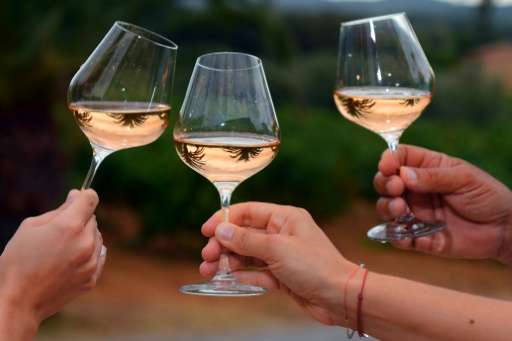Wine's darkest secret revealed - it's all in the fungi

Being a winemaker is a specialised calling, requiring intimate knowledge of soil composition, seasons and weather, chemistry, flavour, even marketing and sales.
Yet the distinctive bouquet and flavour of a Chablis or chardonnay could not be achieved without the input of a brainless, single-celled organism, said a study Thursday.
The previously overlooked vintner, a type of yeast called Saccharomyces cerevisiae, makes a "small but significant" contribution to a wine's flavour and taste, scientists reported in the journal Scientific Reports.
This makes the fungus a key to that enigmatic wine concept "terroir"—everything from the soil, topography, climate and agricultural processes that go into producing your favourite Bordeaux.
"I was surprised that we detected any signal at all from these geographically different yeast populations in the aroma profile of the wine—I thought we would not," co-author Matthew Goddard of the University of Lincoln in England told AFP.
"The signal is small, but detectable," he said by email.
Geographic differences in wines were previously ascribed mainly to plant genetics, local soil and climate, and farming methods.
'Fruity notes' are mostly yeast
"The idea that microbes might play a role in terroir is new, and we think this is the first time that it has been experimentally shown that this is the case," said Goddard.
For the study, the team first showed genetic differences between populations of S. cerevisiae found in sauvignon blanc grapes in six major wine-growing regions of New Zealand.
Then they tested whether these genetic differences influenced the taste and smell of wine.
They found that roughly half of the chemical compounds that determine a wine's unique traits came from yeast during fermentation—"most of the 'fruity' notes in wine are in fact derived from yeast not the fruit," Goddard said.
The compounds are a by-product of fermentation.
Some winemakers add yeast to grape juice for fermentation, but many rely on microbes naturally found in the fruit, he added.
"I note that many (but not all) premium wines are made by spontaneous fermentation, and I think the microbes contribute something to the distinctness (and thus value) of these."
Wine is still mainly a product of terroir, said Goddard—"we just have to widen our concept of what is included in terroir to the other living things in the region—like the microbes."
Further study is needed to determine whether other fungi and bacteria may also be contributing to regional wine characteristics, the authors said.
More information: "Regional microbial signatures positively correlate with differential wine phenotypes: evidence for a microbial aspect to terroir." Scientific Reports. Rep. 5, 14233; DOI: 10.1038/SREP14233
Journal information: Scientific Reports
© 2015 AFP


















